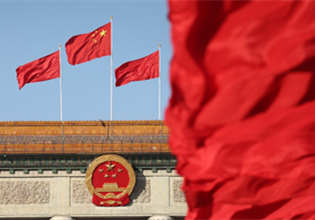Yearning for a glimpse of nomadic life
The sun was about to set over the grasslands of Ordos.
It was the right setting for my first experience in a traditional Mongolian tent house, except that the yurt I entered was far from the real deal.
It was a fancy commercial establishment that had large banquet tables and delicate chandeliers, not a weather-beaten dwelling made of bamboo or wood and felt, the way it used to be when nomads roamed the steppes with their portable homes and livestock.
During my recent visit to the Inner Mongolia autonomous region for a report, I had sought to interview some nomads, but local officials in Ordos, in the region's south, told me that most such groups have settled down over the years and the handful remaining at best lead seminomadic lives in the northeast, along the Russian border.
Back to the modern yurt: Its round base was a concrete structure on which a wooden frame had been inserted, and its outer top was covered by a white cloth-like material, with printed blue horse motifs, seemingly for an authentic effect. Airdried (rather wind-dried) salted mutton, Mongolian tea (salted), flour snacks and walnuts were offered.
Everywhere I looked I saw sheep - grazing on fields outside and as meat on plates indoors.
The yurt is no longer emblematic of grassland life in the region, at least not in the southern part. In today's version, it usually serves as a hotel or homestay for tourists.
Two herders, who also manage similar accommodations in their villages, told me that visitors, including Japanese tourists, like to experience Mongolian culture in summer.
The grasslands dry up in winter and the frigid air then is unlikely to make horseback riding much fun. Although the region had many more horses in the 1970s than it does now, visitors still pay for such thrills, unavailable readily in many other places both in China and abroad. Equestrian shows on average cost 100 yuan ($16) in rural Ordos.
"I want to protect the tradition and present it to tourists," said a local resident, who started to rent out the new yurts in April last year.
Another pastoral herder, in his early 40s, said he missed traditional Mongolian clothes. He only wears them during festivals or weddings these days. His grandparents were nomads, he said, but his childhood memories were too faint to recall stories of the time before they settled down.
The 51-year-old Party secretary of a village, while speaking in Mongolian through a translator, said she spent her teen years herding sheep. Her son, who is 30, has a different life, one supported by machines and cellphones. Many ethnic Mongolians speak Mandarin, but some still use their mother tongue.
Tourism would likely become more important if Inner Mongolia's reliance on coal declines in the future owing to China's stated desire to move toward cleaner fuel. A local official said vast reserves remain under 80 million hectares of grassland.
Contact the writer at satarupa@chinadaily.com.cn
(China Daily 04/09/2018 page2)



 Print
Print Mail
Mail





